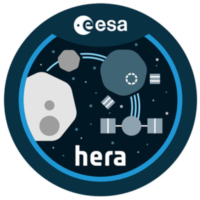On March 12, 2025, Hera performed a Mars swing-by that utilized the planet’s gravity to insert the spacecraft onto a trajectory towards the Didymos-Dimorphos binary asteroid system. Hera made its closest approach to Mars at 21:50 JST on March 12.
ESA has confirmed that the spacecraft condition is normal and that the Hera spacecraft has been successfully inserted onto the intended trajectory.
During the closest approach to Mars, the Hera spacecraft conducted observations of Mars and the Martian moon, Deimos, followed by the second Martian moon, Phobos, using three onboard cameras: the TIRI provided by JAXA, the visible light camera (Asteroid Framing Camera: AFC), and the visible and near-infrared spectroscopic camera (HyperScout-H).
Here, we take a look at the images of Mars and the planet’s moon, Deimos, captured by the TIRI.
ーーーーーーーーーーーーーーーーーーーーーーー
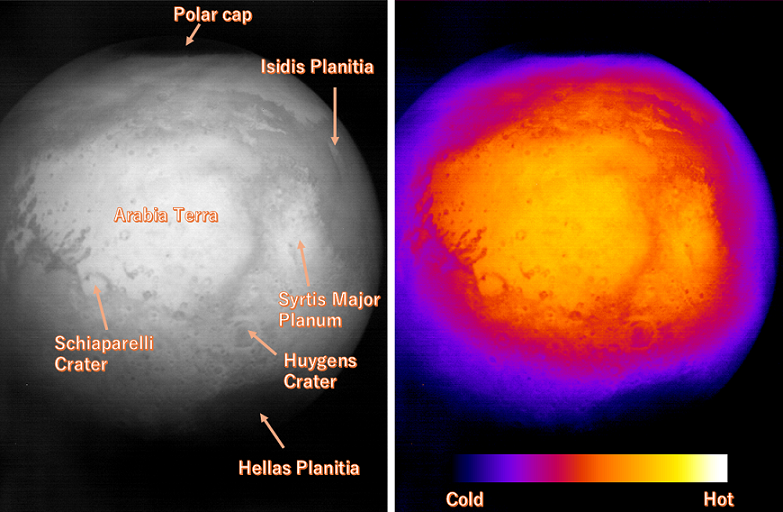
[Figure 1]
The red planet Mars imaged by the TIRI from a distance of approximately 40000 km. The Arabia Terra region can be seen, as well as the Polar Cap, below the detection limit of TIRI, and the Hellas Planitia, the largest crater in the Solar System, as a cold region.
(Left) brightness temperature image, (Right) Image showing high temperatures as warm colors.
(credit: ESA/JAXA)
March 2025 is early summer in the northern hemisphere of Mars.
As a result, the hottest part is slightly north of the Arabian continent (which is called a “continent” because it has a high light reflectivity and appears bright from Earth), which can be seen directly in front of Hera. Two craters, Huygens Crater and Schiaparelli Crater, can be seen to the southeast and southwest of the Arabian continent. They are both about 450 km in diameter. The edges of the craters are sloped, which causes differences in the amount of sunlight they receive, making them appear to stand out when viewed in TIRI’s thermal infrared light.
Although the Cassini Crater, with a diameter of over 400 km, is located in the north-central part of the Arabian continent, it is barely visible in this image. This is because sunlight is hitting Cassini Crater almost directly above. As the inside and rim of the crater are at the same temperature, no difference in color can be seen in thermal infrared images.
A part at the top of the image looks like Mars is chipped, but this is the polar cap. The polar ice caps are made of water and carbon dioxide ice; they are white and reflect sunlight well, which helps keep them cool. For this reason, it seems that the polar caps could not be captured by TIRI.
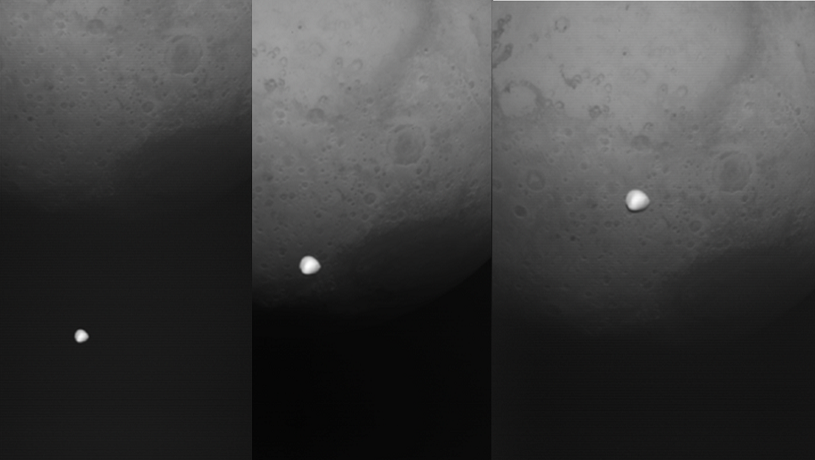
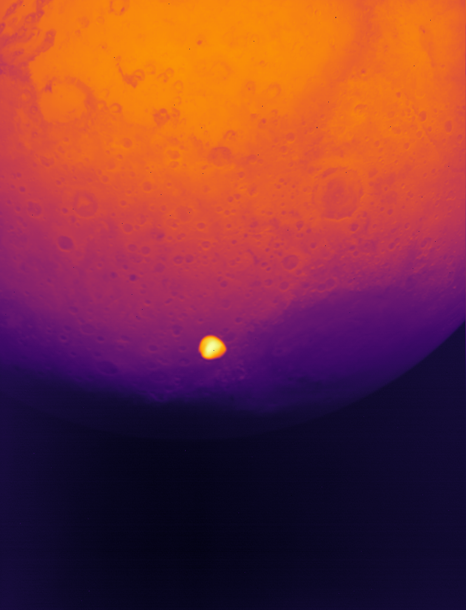
[Figure 2]
Thermal images of the Martian moon, Deimos captured by the TIRI from a distance of about 1000 km.
(top)A series of images, (bottom) Image showing high temperatures as warm colors.
(Credit: ESA/JAXA).
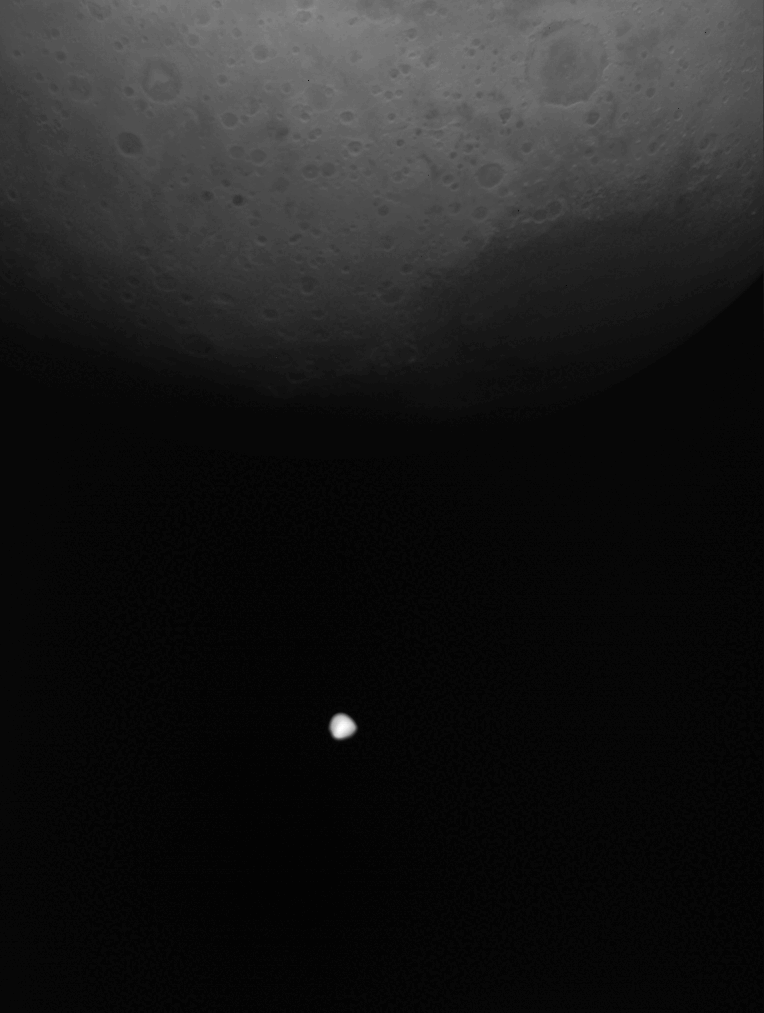
[Movie]
Deimos passing Mars.
(Credit: ESA/JAXA)
Although it appears as if the Martian moon Deimos is passing in front of Mars from south to north, the image was actually taken as Hera passed very close to Deimos from north to south at high speed.
Deimos appears brighter than Mars. This means that the surface of Deimos is hotter than the surface of Mars. The material covering the surface of the Deimos has low reflectivity and is pitch black. This allows it to absorb sunlight well and become hotter.
In contrast, the surface of Mars is highly reflective, and its atmosphere transports heat from the warm daytime side to the cooler nighttime side. This is why there is a large temperature difference between Mars and Deimos.
Hiroki Senshu
Planetary Exploration Research Center,
Chiba Institute of Technology
ーーーーーーーーーーーーーーーーーーーーーーー
Hera is scheduled to rendezvous with the binary asteroids, Didymos and Dimorphos, in December 2026 and conduct observations of the system for about six months. Periodic operational checks of the TIRI will take place throughout the journey in preparation for observations. After Hera arrives at the binary asteroid, TIRI will be used to conduct the first thermal property survey of an S-type (stony) asteroid, as well as to investigate the post-impact state after the collision from the United States National Aeronautics and Space Administration (NASA)’s Double Asteroid Redirection Test (DART).
Okada Tatsuaki, Hera-JAPAN Project Team Leader
“The Hera spacecraft has now made it through the first hurdle after launch, the Mars swing-by, and has now been placed onto a trajectory towards the binary asteroids, Didymos and Dimorphos. As a technological demonstration for planetary defense–preventing asteroids from colliding with the Earth—and to elucidate the formation process of planets, including the Earth, we will strive to deliver many results through valuable scientific observations. We also hope that the observations of Mars and its moons will serve as a good bridge to the Martian Moons eXploration (MMX) mission.”
March 14, 2025
Hera-JAPAN Team
【ESA Press Release】
https://www.esa.int/Space_Safety/Hera/Hera_asteroid_mission_spies_Mars_s_Deimos_moon
